Cisco CCNA Distance Vector Routing Protocol
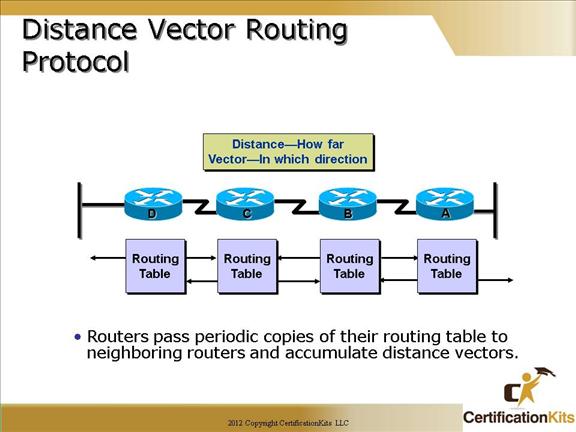
The distance-vector protocols find the best path to a remote network by judging distance.
Each time a packet goes through a router, that’s called a hop. With RIP, the route with the least number of hops to the network is determined to be the best route. IGRP utilizes a more complex algorithm for determining the best route. It is a combination of bandwidth, delay, load, reliability and mtu.
The vector indicates the direction to the remote network. Both RIP and IGRP are distance-vector routing protocols.
Distance vector routing protocols are sometimes referred to as routing by rumor.
Distance vector algorithms do not allow a router to know the exact topology of an internetwork.
This information is somewhat analogous to the information found on signs at a highway intersection. A sign points toward a road leading away from the intersection and indicates the distance to the destination.
Further down the highway, another sign also points toward the destination, but now the distance to the destination is shorter.
As long as each successive point on the path shows that the distance to the destination is successively shorter, the traffic is following the best path.
Cisco CCNA Discovering Routes
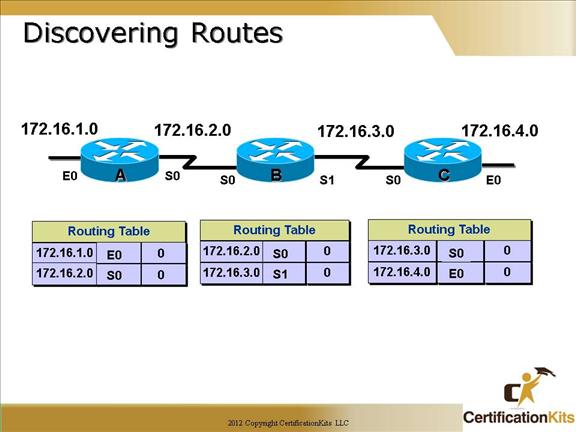
Routers, when powered up and the interfaces are enabled, have only their directly connected networks in the routing table. Directly connected interfaces have a distance of 0.
Cisco CCNA Discovering Routes
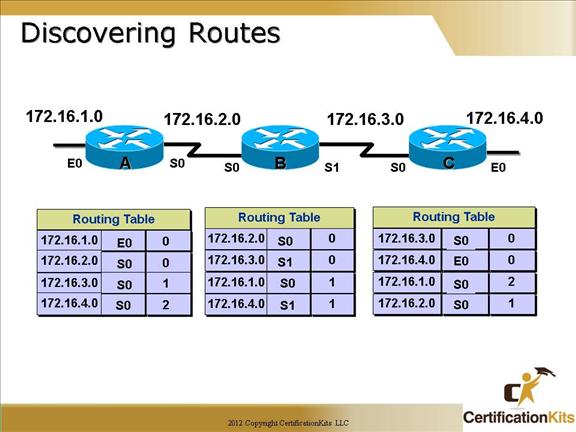
Router C is directly connected to network 172.16.4.0 with a distance of 0. This example utilizes RIP as the routing protocol. This is known based on the metric in the routing table. Router A’s path to 172.16.4.0 is through Router B, with a metric (hop count) of 2.
Cisco CCNA Routing Loops
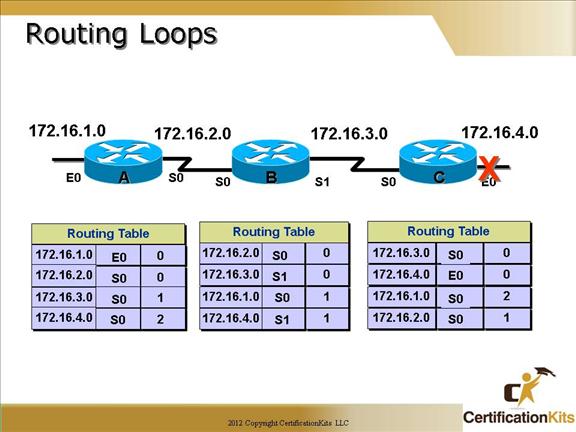
Router C has detected the failure of network 172.16.4.0 and stops routing packets out its E0 interface. However, Router A has not yet received notification of the failure and still believes it can access network 172.16.4.0 through Router B.
Router A’s routing table still reflects a path to network 10.4.0.0 with a distance of 2.
The failure scenario is continued on the following slide.
Cisco CCNA Sysmtom:Counting to Infinity
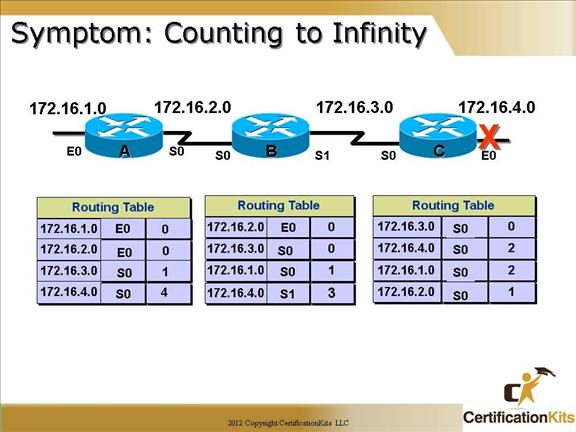
Because Router B’s routing table indicates a path to network 172.16.4.0, Router C believes it now has a viable path to 172.16.4.0 through Router B.
Router C updates its routing table to reflect a path to network 172.16.4.0 with a hop count of 2.
The failure scenario is continued on the following slide.
Cisco CCNA Sympton : Counting To Infinity
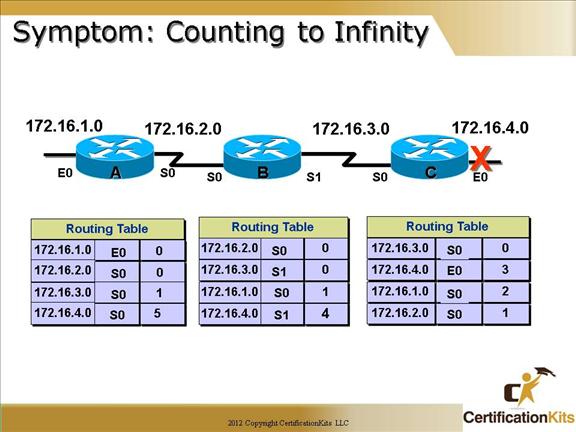
Router A receives the new routing table from Router B, detects the modified distance vector to network 172.16.4.0, and recalculates its own distance vector to network 172.16.4.0.
The failure scenario is continued on the following slide.
Cisco CCNA Solution : Defining a Maximum
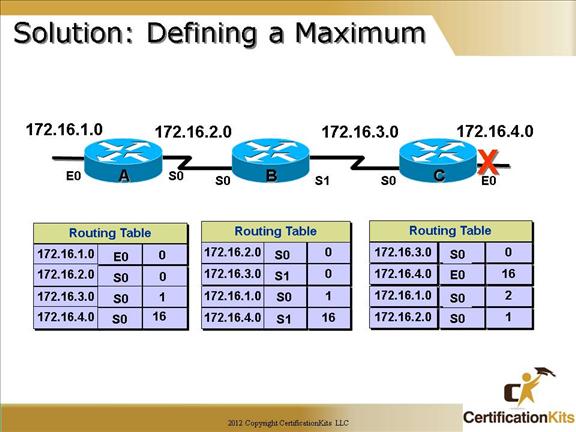
To avoid prolonging the count-to-infinity time span, distance vector protocols define infinity as some maximum number.
This number refers to a routing metric, such as a hop count.
The failure scenario is continued on the following slide.
Cisco CCNA Solution : Split Horizon
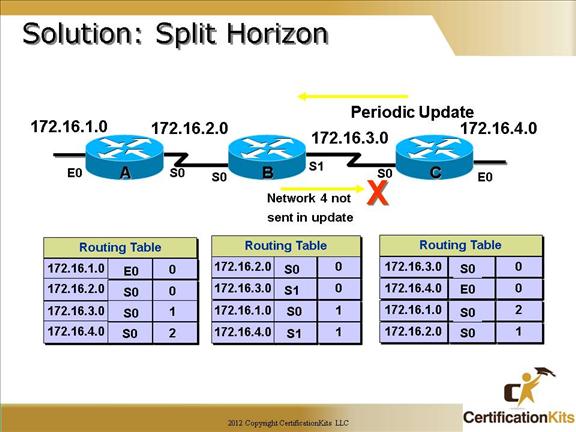
The rule of Split Horizon states: Never advertise a route out of the interface through which you learned it.
The failure scenario is continued on the following slide.
Cisco CCNA Solution : Route Poisoning
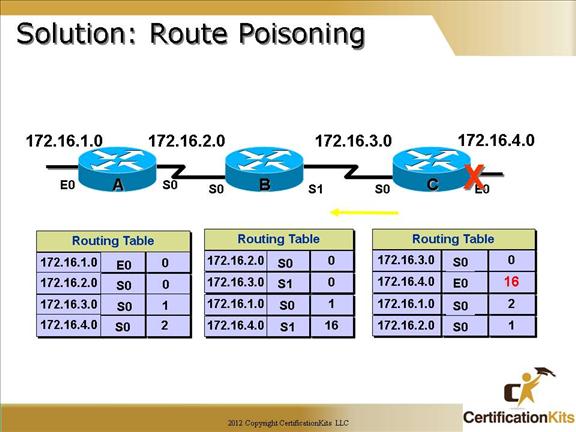
Route Poisoning sends a “infinite hop count” for a downed link.
The failure scenario is continued on the following slide.
Cisco CCNA Solution : Poison Reverse
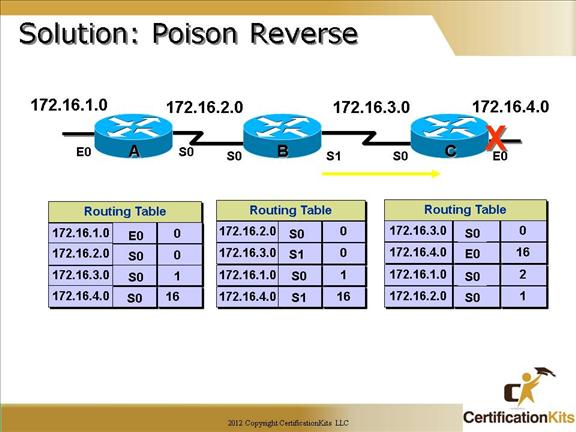
Poison Reverse is an acknowledgement to a route poison. Poison reverse overrides the split-horizon solution
Poison Reverse states: Once you learn of a route through an interface, advertise it as unreachable back through that same interface.
The failure scenario is continued on the following slide.
Cisco CCNA Holddown Timers
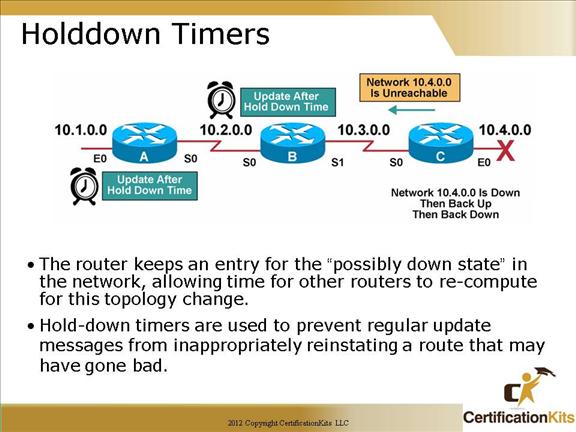
Hold-down timers are used to prevent regular update messages from inappropriately reinstating a route that may have gone bad.
Hold-downs tell routers to hold any changes that might affect routes for some period of time.
The hold-down period is usually calculated to be just greater than the period of time necessary to update the entire network with a routing change.
